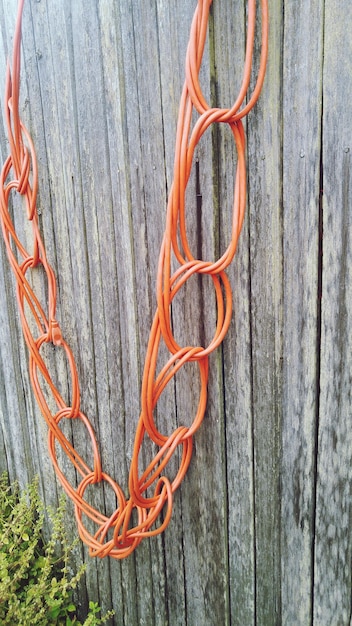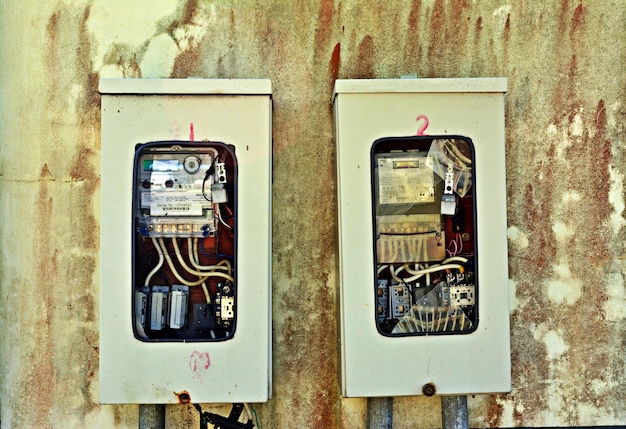Is Your Home Electrical System Safe? 5 Warning Signs for 2025

Ensuring your home’s electrical safety is crucial; in 2025, be alert for flickering lights, frequent circuit breaker trips, outdated wiring, burning smells, and warm outlets, as these indicate potential hazards and the need for an electrical system upgrade.
Is your home a safe haven? While you might focus on security systems and smoke detectors, a critical, often overlooked aspect is your electrical system. Is Your Home Electrical System Safe? 5 Warning Signs You Need an Upgrade in 2025, and ignoring them could lead to serious consequences.
Understanding Home Electrical Safety in 2025
The electrical system in your home is the backbone of modern living, powering everything from your lights and appliances to your entertainment systems and home office. However, like any system, it can age, degrade, and become unsafe over time. Understanding the basics of electrical safety can help you identify potential problems before they escalate into hazardous situations.
Aging Electrical Systems
Just as a car needs regular maintenance, your home’s electrical system has a lifespan. Over the years, wiring can deteriorate, connections can loosen, and components can fail. This is especially true for older homes where the original electrical systems were not designed to handle the demands of modern appliances and technology.
Increased Power Demands
Today’s homes consume significantly more electricity than those of the past. With the proliferation of electronic devices, smart appliances, and energy-intensive systems like air conditioning and electric vehicle chargers, your electrical system may be overloaded. This can lead to frequent circuit breaker trips, overheating, and even electrical fires.

Common Electrical Hazards
Several hazards can compromise your home’s electrical safety. These include:
- Overloaded Circuits: Plugging too many devices into a single circuit can cause it to overheat.
- Faulty Wiring: Damaged or deteriorated wiring can create short circuits and increase the risk of fire.
- Water Exposure: Water and electricity don’t mix. Moisture can cause corrosion and create dangerous electrical pathways.
- Outdated Components: Old outlets, switches, and circuit breakers may not meet current safety standards.
By recognizing these hazards, you can take proactive steps to protect your home and family from electrical dangers.
In conclusion, understanding the basics of home electrical safety involves recognizing the signs of aging systems, being aware of increased power demands, and identifying common hazards. This knowledge is the first step toward ensuring a safe and secure living environment.
Warning Sign 1: Flickering Lights
One of the most noticeable signs of an electrical problem is flickering lights. While a single flickering bulb could simply need replacing, consistent or widespread flickering points to a more significant issue within your electrical system.
Loose Connections
Flickering lights can be caused by loose connections in your wiring. Over time, wire connections at outlets, switches, and light fixtures can loosen due to vibration, temperature changes, or improper installation. This creates resistance and can lead to voltage fluctuations, causing lights to flicker.
Overloaded Circuits
Another potential cause of flickering lights is an overloaded circuit. When you plug too many devices into a single circuit, the circuit may not be able to handle the electrical load. This can cause the voltage to drop, resulting in flickering lights and potentially tripping the circuit breaker.
Voltage Fluctuations
- Check for loose bulbs and connections.
- Unplug devices that may be overloading the circuit.
- Contact a qualified electrician to inspect your wiring and connections.
Addressing flickering lights promptly can prevent further damage to your electrical system and reduce the risk of electrical fires. Don’t ignore this warning sign; take action to ensure the safety of your home.
In summary, flickering lights can be a sign of loose connections, overloaded circuits, or broader voltage fluctuations. Identifying the cause of the flickering and taking proper steps to address it is essential for maintaining a safe electrical system.
Warning Sign 2: Frequent Circuit Breaker Trips
Circuit breakers are designed to protect your home from electrical overloads and short circuits. When a circuit breaker trips, it’s a safety mechanism that shuts off the power to prevent overheating and potential fires. However, if your circuit breaker trips frequently, it’s a clear indication that something is amiss.
Overloaded Circuits
The most common reason for a circuit breaker to trip is an overloaded circuit. This occurs when you plug too many devices into a single circuit, drawing more electricity than the circuit is designed to handle. Appliances like hair dryers, space heaters, and microwaves are notorious for drawing high amounts of power.
Short Circuits
A short circuit happens when a live wire comes into contact with a neutral wire or a grounded metal object. This creates a sudden, high flow of electricity, causing the circuit breaker to trip immediately. Short circuits can be caused by damaged wiring, faulty appliances, or water exposure.
Ground Faults
A ground fault occurs when a live wire comes into contact with a grounded surface, such as a metal appliance casing or a plumbing pipe. Like short circuits, ground faults cause a sudden surge of electricity that trips the circuit breaker. Ground fault circuit interrupters (GFCIs) are designed to protect against ground faults in areas like bathrooms and kitchens.
- Unplug devices from the circuit.
- Check for damaged wiring or faulty appliances.
- Consider upgrading your electrical panel to increase capacity.
Addressing frequent circuit breaker trips can prevent electrical hazards and ensure the reliability of your home’s electrical system. Don’t dismiss this warning sign; take action to identify and resolve the underlying issue.
In conclusion, frequent circuit breaker trips are a warning sign of overloaded circuits, short circuits, or ground faults. Identifying the cause and implementing the right solutions is essential for maintaining a safe and functional electrical system.
Warning Sign 3: Outdated Wiring
The age of your home’s wiring can significantly impact its safety and performance. Over time, wiring materials can degrade, insulation can crack, and connections can loosen. Outdated wiring may not be able to handle the demands of modern appliances and technology, increasing the risk of electrical problems.
Aluminum Wiring
Aluminum wiring was commonly used in homes built in the 1960s and 1970s. While aluminum is a good conductor of electricity, it expands and contracts more than copper, which can cause connections to loosen over time. Loose connections can create resistance, leading to overheating and fire hazards.
Knob-and-Tube Wiring
Knob-and-tube wiring is an obsolete wiring method that was used in homes built before the 1940s. This type of wiring consists of single-insulated wires supported by ceramic knobs and tubes. Knob-and-tube wiring lacks a grounding conductor, which can increase the risk of electrical shock.

Deteriorated Insulation
- Inspect wiring for signs of damage or deterioration.
- Consider replacing aluminum wiring with copper wiring.
- Upgrade knob-and-tube wiring to modern wiring standards.
Upgrading outdated wiring can improve the safety and efficiency of your home’s electrical system, reducing the risk of electrical fires and shocks.
In summary, outdated wiring, such as aluminum and knob-and-tube wiring, presents significant safety risks. Upgrading to modern wiring standards is an investment in the safety and longevity of your home.
Warning Sign 4: Burning Smells
A burning smell coming from outlets, switches, or electrical panels is a serious warning sign that should never be ignored. This could indicate overheating wires, melting insulation, or other electrical malfunctions that can lead to fires.
Overheating Wires
Burning smells are often caused by overheating wires. This can occur when wires are overloaded, damaged, or improperly connected. The heat generated by the excessive current can cause the insulation around the wires to melt, producing a distinct burning odor.
Faulty Outlets and Switches
Faulty outlets and switches can also emit burning smells. When these components fail, they can create resistance and generate heat. This can cause the plastic casing to melt and emit a burning odor. Loose connections and corrosion can also contribute to the problem.
Electrical Panel Problems
Problems within the electrical panel, such as loose connections, corroded components, or damaged circuit breakers, can also produce burning smells. The electrical panel is the central hub of your home’s electrical system, so any issues here should be addressed immediately.
- Immediately turn off the power to the affected circuit.
- Do not use the outlet or switch that is emitting the smell.
- Contact a qualified electrician to inspect and repair the electrical system.
Addressing burning smells promptly can prevent electrical fires and protect your home and family from harm. Never ignore this warning sign; take immediate action to identify and resolve the issue.
In conclusion, burning smells emanating from electrical components are a serious warning sign of potential electrical hazards. Swift action is crucial to prevent fires and ensure the safety of your home.
Warning Sign 5: Warm Outlets
Outlets should always be cool to the touch. If you notice that an outlet feels warm or hot, it’s a sign that there may be an underlying electrical problem. Warm outlets can indicate overloaded circuits, loose connections, or other issues that can lead to overheating and potential fires.
Overloaded Circuits
When you plug too many devices into an outlet, the circuit may become overloaded. This overload can cause the wires and connections to overheat, making the outlet feel warm to the touch. This is particularly common with high-power devices such as space heaters and hair dryers.
Loose Connections
Loose connections at the outlet can create resistance and generate heat. Over time, the connections between the wires and the outlet terminals can loosen due to vibration, temperature changes, or improper installation. This resistance can cause the outlet to heat up.
Arcing
Arcing occurs when electricity jumps from one conductor to another, creating a spark. This can happen due to damaged wiring, loose connections, or corroded contacts. Arcing generates significant heat and can cause the outlet to become warm or hot to the touch.
- Unplug devices from the warm outlet.
- Do not use the outlet until it has been inspected by an electrician.
- Check for loose connections or damaged wiring.
Addressing warm outlets promptly can prevent electrical fires and ensure the safety of your home. Don’t ignore this warning sign; take action to identify and resolve the underlying issue.
In summary, warm outlets are a clear sign of potential electrical problems, such as overloaded circuits, loose connections, or arcing. Identifying the cause and taking appropriate action is essential for maintaining a safe electrical system.
| Key Sign | Brief Description |
|---|---|
| 💡 Flickering Lights | Indicates loose wiring or overloaded circuits. |
| 💥 Tripping Breakers | Shows overload or short circuit in wiring. |
| 🔥 Burning Smells | Signals overheating or electrical malfunction. |
| 🌡️ Warm Outlets | Suggests overheated wiring or arcing. |
Frequently Asked Questions
▼
Immediately turn off the circuit breaker for that outlet and call a qualified electrician. Do not use the outlet until it has been inspected and repaired.
▼
It is recommended to have your electrical system inspected by a qualified electrician at least every 3-5 years, or more frequently if you live in an older home.
▼
Upgrading your electrical panel can provide increased capacity, improved safety, and the ability to accommodate modern appliances and technology, reducing the risk of electrical hazards.
▼
A GFCI (Ground Fault Circuit Interrupter) outlet protects against electrical shock. It should be installed in areas where water is present, such as bathrooms, kitchens, and outdoor locations.
▼
To prevent overloaded circuits, avoid plugging too many high-power devices into a single circuit. Use power strips with built-in circuit breakers and consider distributing appliances across multiple circuits.
Conclusion
Being vigilant about your home’s electrical system and recognizing warning signs is crucial for ensuring safety and preventing potential hazards. If you notice any of these signs, it’s essential to take immediate action and consult with a qualified electrician to assess and address the issues. Prioritizing electrical safety will provide peace of mind knowing your home is a secure environment for you and your family.





